Tomb 42
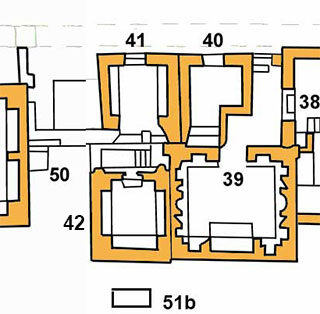 Tomb 42 is a tomb with two floors.
Tomb 42 is a tomb with two floors. The grave borders to the south upon tomb 39, but has been built in a later period.
Originally tomb 42 was detached with a view on the Via Severiana. After the erection of tomb 41 in front of it the view was lost. Today's street level is higher than the level of the floor of tomb 42, and the lower burial chamber can only be reached by three steps down.
There are several clues that tomb 42 was built in two phases. The façade of the lower burial chamber was strengthened with two walls to carry the upper floor. The letters D and M, part of the inscription above the entrance, are cut out in slabs of travertine on both sides of that inscription. Only the M is still visible. The letter D disappeared behind the stairs to the upper floor.
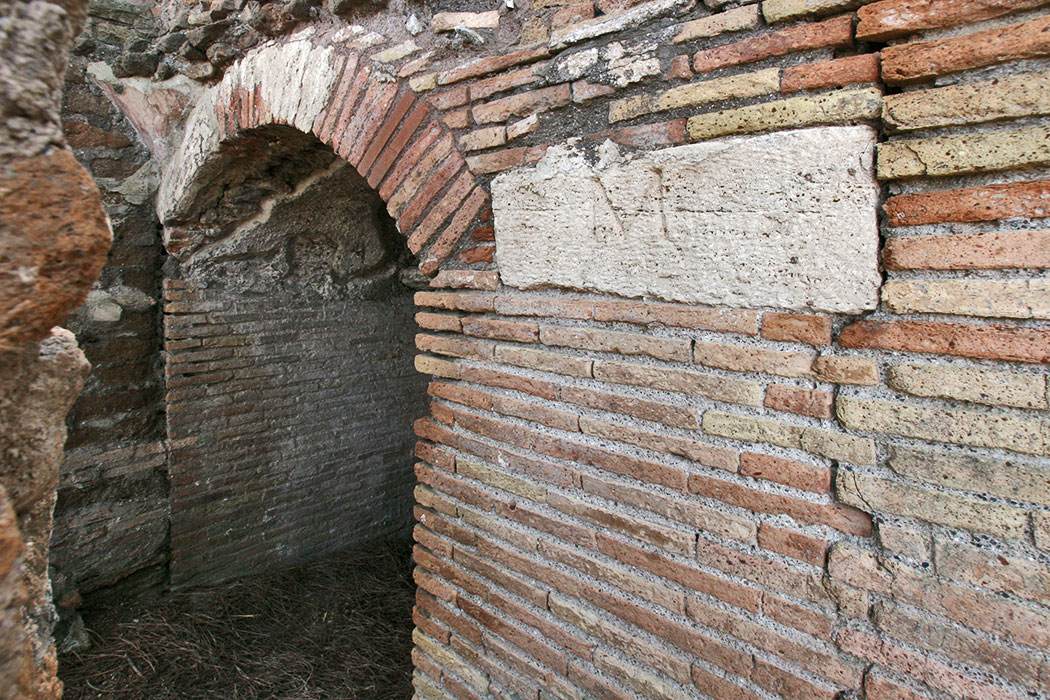
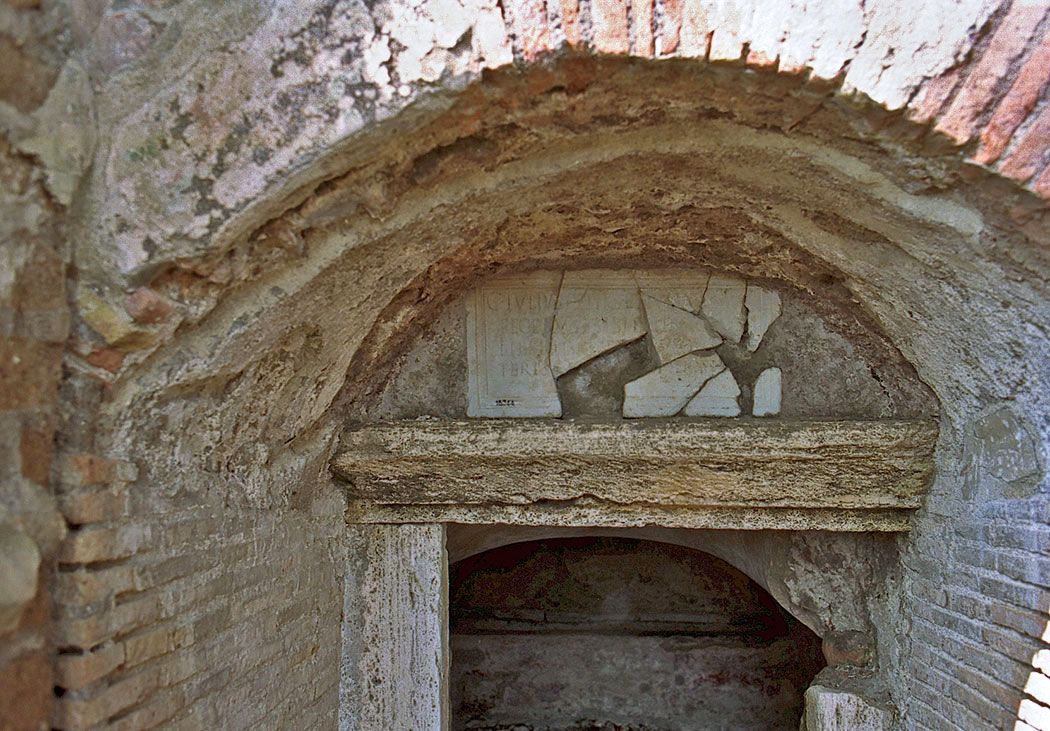
Above the entrance is a marble plate with the following inscription in small, irregular characters:
C(aius) IVLIVS FELIXS ET IVLIA ASIA
FECERVNT SIBI ET LIBERIS SVIS
LIBERTIS LIBE[RTAB]VSQVE [POS]
TERISQV[E EORV]M H(oc) M(omumentum) E(xterum)
H(eredem) [N(on) S(equetur)]
(According to this inscription Caius Iulius Felix and Iulia Asia made this grave for themselves and for their children, their freed slaves, and the descendants. The tomb could not be inherited by strangers).
During the excavations the following graffito has been found in the white stucco of the ceiling in front of the entrance of the lower burial chamber1:
ego memini quenda(m) crissasse puellam
cuius cineres aurea terra tegat
"I remember touching the buttocks of a certain girl, whose ashes covers the golden earth". Unfortunately the graffito does not exist anymore.
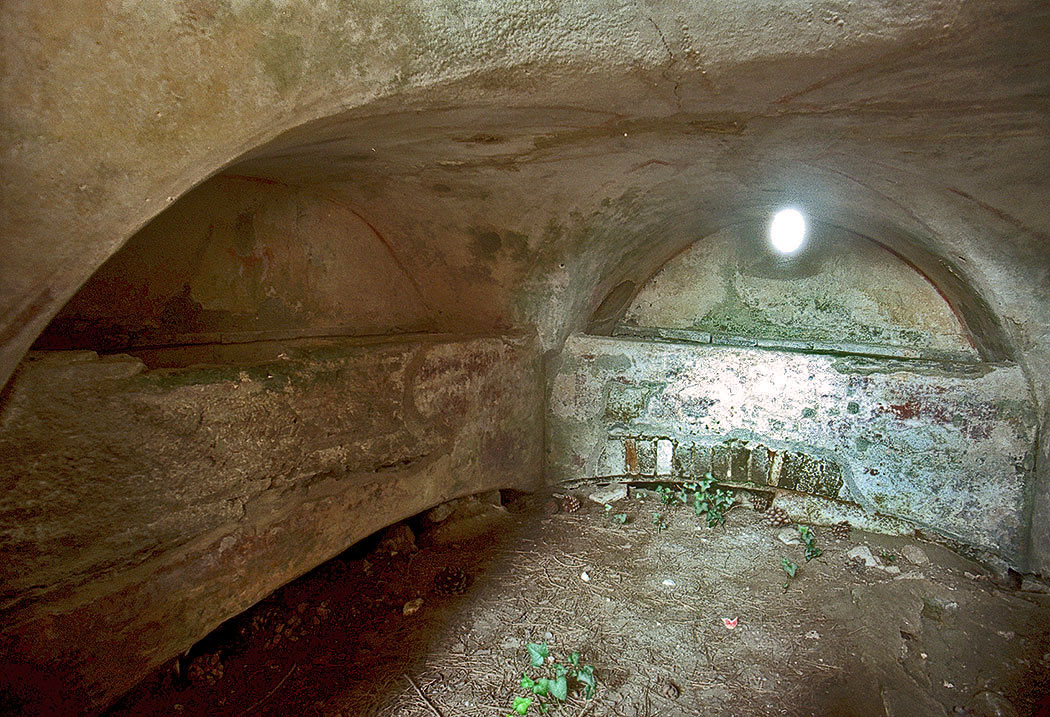
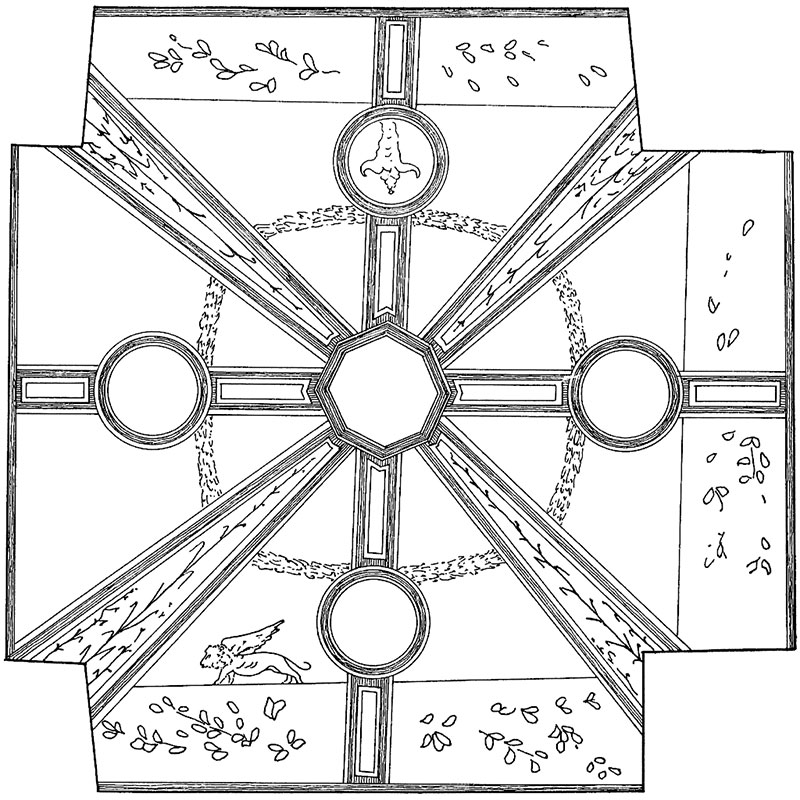
Photo: Calza 1940, fig. 71.
Next to the entrance are smaller niches for urns. These niches were not used.
The black-and-white mosaic floor, partly preserved, covers three formae.
The ceiling has the only still existing cross vault in the necropolis. This ceiling was beautifully decorated with geometric figures. In the centre a male figure was depicted. Each surface had a painting of an animal. The decoration dates from the end of the second century AD.
The arcosolia were red coloured and decorated with, among others, cows. The painting from the upper niche in the right wall is today in the museum of Ostia (inv. nr. 10034). The smaller niches flanking the entrance are painted with red flowers.
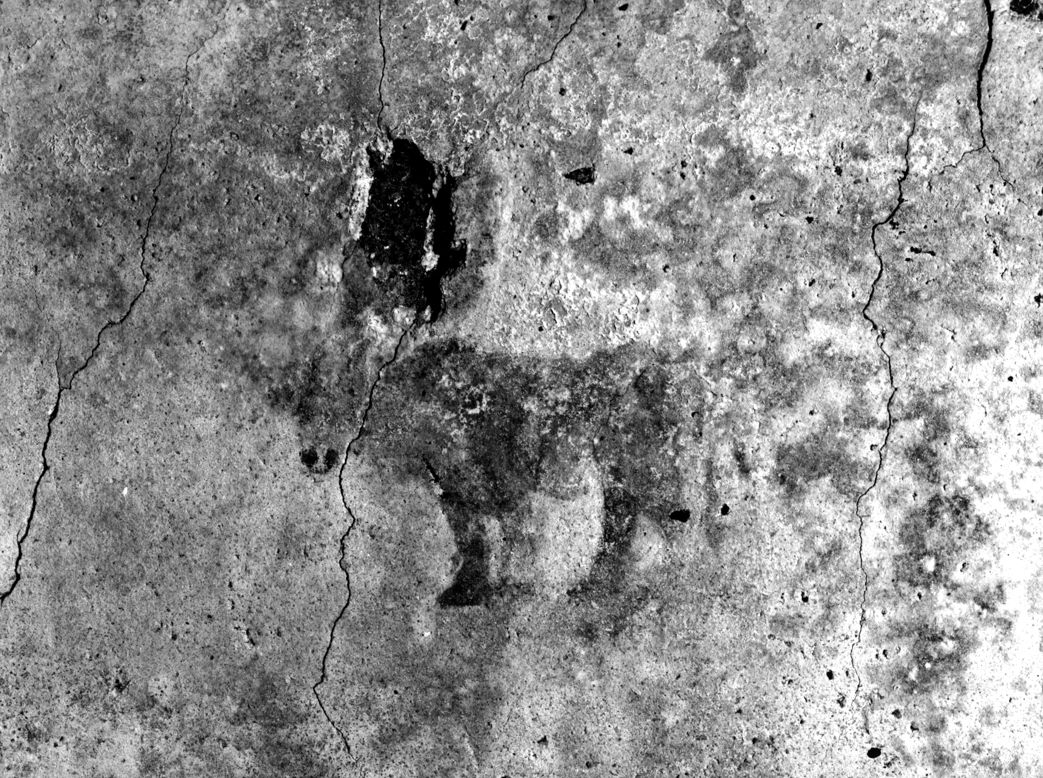
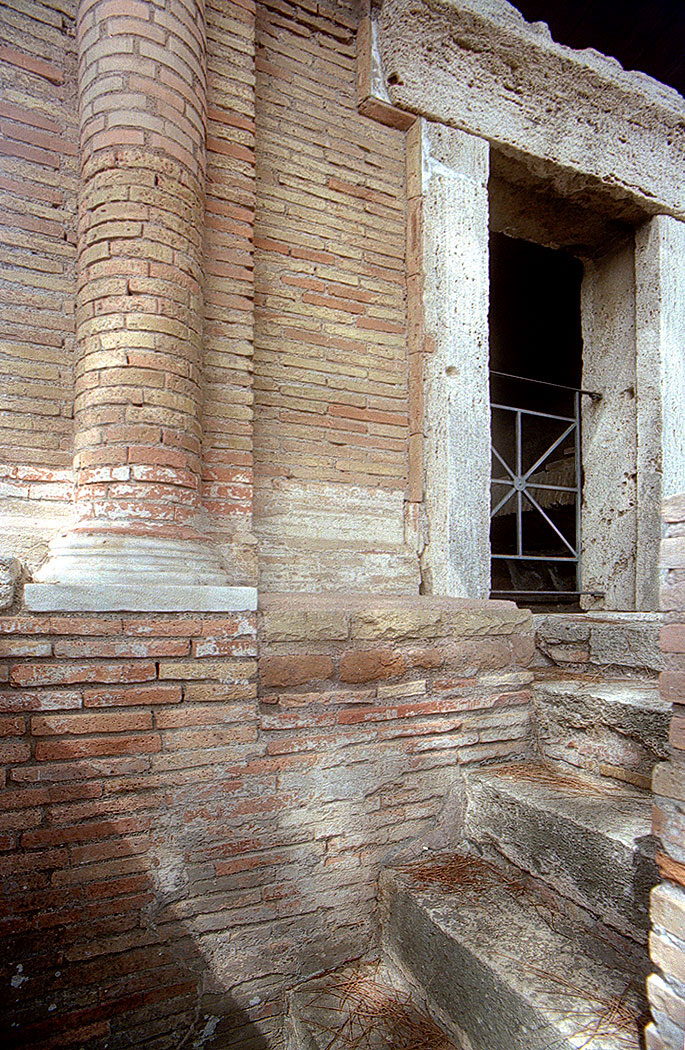
The staircase consists of eight travertine steps and turns halfway 90 degrees to the right. At the top first you enter a walled-in, open space in front of the actual burial chamber. This space was probably used as a solarium (see tomb 29).
The solarium has a black-and-white mosaic floor with geometrical motifs.

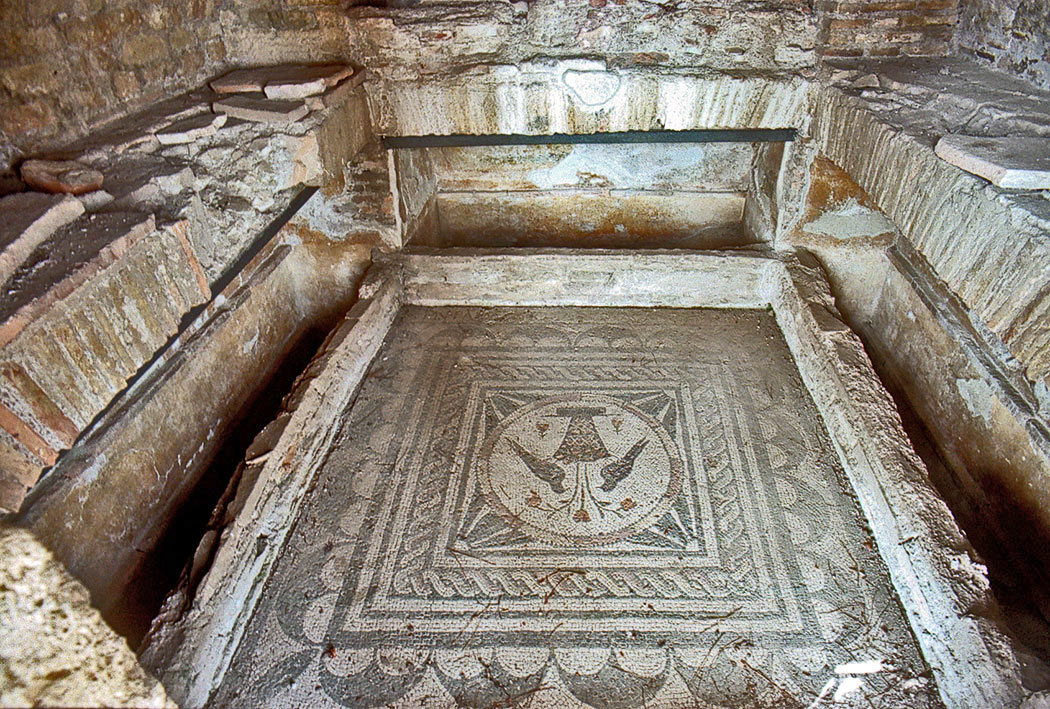
The upper burial chamber has a double row of arcosolia alongside three walls. In each of them was room for two bodies.
The floor has a polychrome mosaic. In the middle we see a round medallion in a square field. In the medallion a bowl with flowers and pigeons are depicted. The mosaic is special because the depiction in the medallion is facing the back wall and not the entrance.
The following inscription, also part of the mosaic, can be read from the entrance:
IN PAIMENTO SARCOFAGA N IIII IN LONGO
This inscription tells us that four sarcophagi have been placed longitudinally under the floor (east/west).
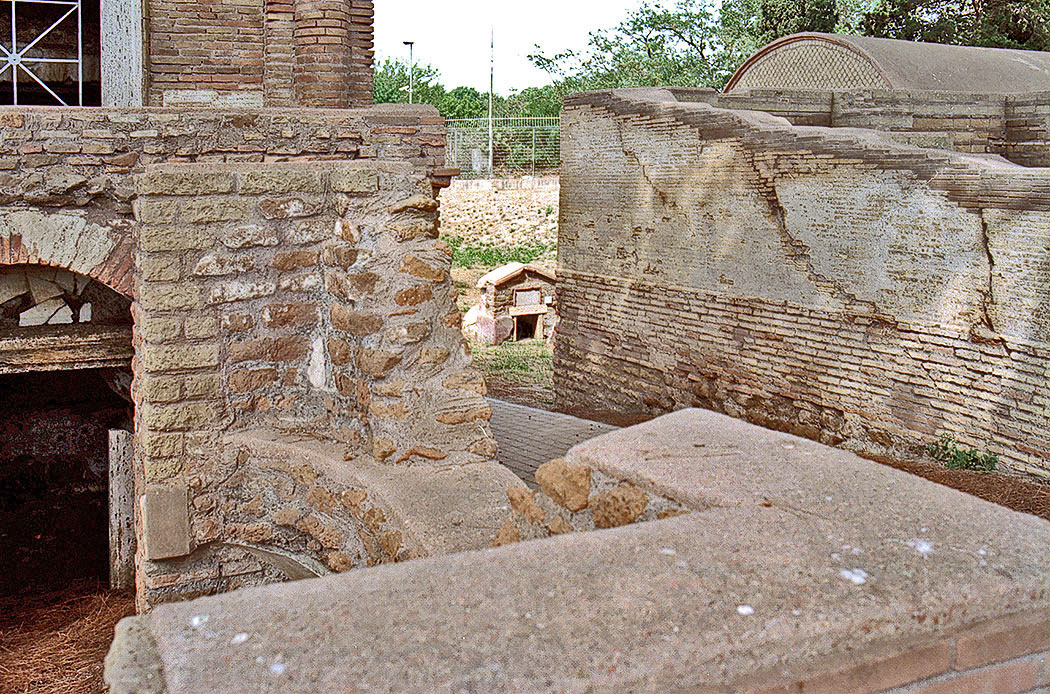
Below the alley were the tombs 41 bis and 42 bis located.
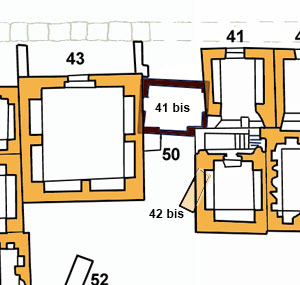
Extensive investigation in the area around tombs 41 and 42 has shown the complex situation before the building of the two tombs.
On account of the obvious fast silting up of this part of the necropolis many graves had been built on top of each other in the previous periods. Not much can be said with certainty about the exact position of the various graves. We know however that tomb 42 in the north-east corner is supported by an older tomb "a cassone", today known as tomb 42bis.
- Sources
- Russel Meigs - Roman Ostia, At the Clarendon Press 1973
- Guido Calza - Necropoli nell'Isola Sacra'(1940)
- Dr. Jan Theo Bakker.
- Hilding Thylander - Inscriptions du port d'Ostie (Lund C W K Gleerup 1952).
- Ida Baldassarre, Irene Bragantini, Chiara Morselli and Franc Taglietti - Necropoli di Porto, Isola Sacra (Roma 1996).
- Notes
- 1:The graffiti is described by G. Calza as well as by Thylander. The text should be a variation on a Greek epitaph (R. Lattimore). The beginning of the text was unreadable and should miss the word “hic”. The possible translation is curious: was the author an unknown lover of the girl or someone who had the intention to blemish the deceased still? We shall never know. G. Calza: “Necropoli nell’Isola Sacra”. Rome 1940-Thylander: “Inscriptions du port d’Ostie”.-R. Lattimore: “Themes in Greek and Latinepitaphs”.
Waardeert u ons werk?
Wordt lid van Roman Ports en ontvang het boek of doe een donatie!
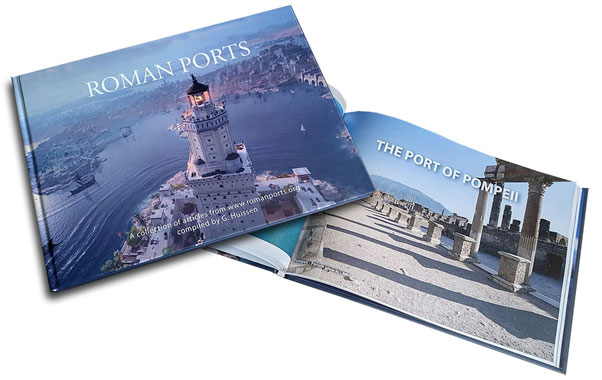 Wordt lid en steun ons
Wordt lid en steun ons
Isola Sacra Index (N)

Speciale sectie over de Romeinse begraafplaats van Portus (Engels)....
Lees meer...De teruggevonden vloot van Pisa

In 1998 werd bij toeval een ongelooflijk archeologisch erfgoed ontdekt in de buurt van het station Pisa San Rossore....
Lees meer...Leptiminus
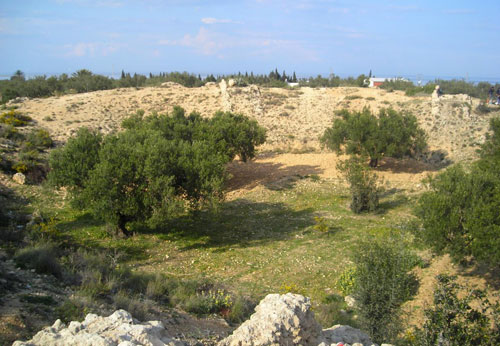
Op de plaats van het huidige Lamta aan de oostkust van Tunesië lag al in de oudheid een havenstad met de naam Leptis Minor ....
Lees meer...Romeins Zeehandelsrecht

Het Romeinse recht is het fraaiste monument dat Rome aan West-Europa heeft nagelaten....
Lees meer...Sullecthum (Salakta)

In de Sahel, in de Tunesische provincie Madhia vinden we aan zee het kleine stadje Salakta....
Lees meer...
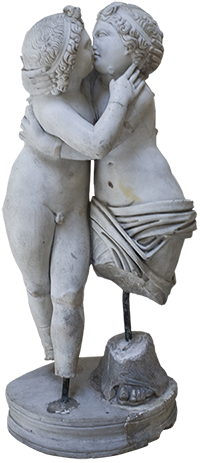 We are committed to providing versions of our articles and interviews in several languages, but our first language is English.
We are committed to providing versions of our articles and interviews in several languages, but our first language is English.